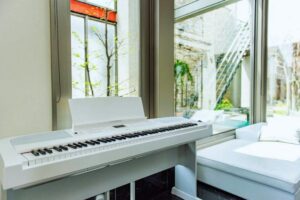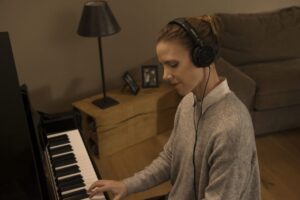Yamaha introduced the Yamaha CS-80 in 1976, and it was received with a lukewarm reception. It was expensive, heavy and its patch system was clumsy. Yet, the Yamaha CS-80 Synthesizer has now become a legend. Why?
The Yamaha Corporation launched the CS-80 Yamaha synthesizer, an analog synthesizer, in 1976. It supported true 8-voice polyphony. This synthesizer has two independent layers for each voice. Every voice in the CS-80 has its own set of panel controls. The sound that this synthesizer produced contributed immensely to modern music history.
The CS-80 is not only very heavy, but it is also costly. The reason for the high cost was that it was the flagship synthesizer in those days. Musicians created richer and fuller unmatched (even today) sounds due to this synthesizer’s dual voice layout.
Read on to learn more about the Yamaha CS-80 synth, its specs and features, how it works, and a bit of its history.
Yamaha CS-80 Synthesizer
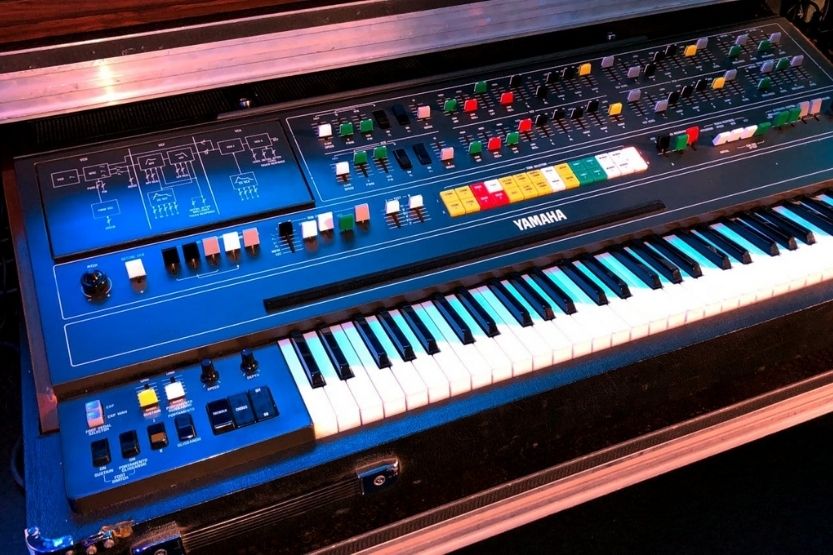
The Yamaha CS-80 Synthesizer was the flagship model of Yamaha Corporation’s CS Series synthesizers. It is a combo analog synthesizer that featured eight-voice polyphony. Each voice has its own set of panel controls.
This synthesizer is huge and heavy. It is also very pricey. The reason being musicians can create richer and fuller sounds than before. It was difficult to replicate the sounds up until today.
However, Yamaha stopped producing this synthesizer in 1980. Its nearest rivals at the time of its popularity were the Oberheim OB-X polysynths and the Sequential Circuits Prophet-5. Many consider the CS-80 as the predominant polyphonic analog synthesizer. Its high price is proof of its leading position in this class of musical instruments.
The CS-80 has two 2-tone generators with 22 pre-synthesized instrument voices. You can mix them with the use of MIX sliders. Also, you can open the upper-left panel with the block diagram. Inside are four sets of small sliders. You can use them to pre-program voices if they want to have them available just by pressing a button.
Famous Pop Artists Who Used the Yamaha CS-80 Synthesizer
The Yamaha CS-80 owes its popularity to the famous pop singers and artists that used it in their records, hit songs, and performances. One such artist is Vangelis, who used this synthesizer extensively. Vangelis said that the CS-80 is the most important synthesizer in his career. He believed that it was the best analog synthesizer ever been made.
The other household names that used the Yamaha CS-80 at any one time in their musical careers include the following:
- Stevie Wonder
- Paul McCartney
- Chicago
- Michael Jackson
- ABBA
- Bon Jovi
- Jethro Tull
- Michael McDonald
- Cat Stevens
- Toto
- Stevie Winwood
- Electric Light Orchestra
- And many more
Specs and Features of the Yamaha CS-80 Synthesizer
The Yamaha CS-80 was among the first polyphonic synthesizers available on the market at that time. It created and produced incredible sounds, expressive controls and led the way in patch memory development. Here are the specifications of the original CS-80:
Specifications
- Synthesis type – Analog subtractive
- Keyboard – 61-note with velocity plus polyphonic aftertouch (one per note instead of one per patch)
- Polyphony: 8 voices, dual layers
- Oscillator – 2 per voice
- Aftertouch expressions – Yes, polyphonic
- Velocity expression – Yes
- Filter – 2 high-pass and 2 low-pass
- Effects – chorus, tremolo
- Timbrality – Multitimbral
- Storage memory – 22 preset, 4 user
- Left-hand control – Ribbon Controller
- Weight – over 200 lbs.
- Price – $6,900
Features
The Yamaha CS-80 Synth is on the list of the most expressive analog synthesizers. It has separate high pass and low pass filters, polyphonic aftertouch, and a big ribbon controller. This synthesizer became the voice of pop icons like ABBA and Vangelis. Some of its more notable features are:
Supports True 8-voice Polyphony
There are two layers of independent synthesizers for each voice, and each voice has its own set of front panel controls. This allows the musician to produce 8 different notes at the same time.
Hardwired preset voice settings and four-parameter settings stores that are based on several banks of subminiature potentiometers.
Complete performer expression features include a layered keyboard that is pressure-sensitive (aftertouch) and velocity-sensitive (similar to a piano).
Polyphonic Aftertouch
You can apply this to each voice instead of being common for all. If you vary the pressure with your fingers as you hold a chord, the sound produced will respond to the pressure changes.
The ribbon controller allows polyphonic glissandos (smooth glides between multiple notes) and pitch-blends. You can hear this kind of sound in the movie “Chariots of Fire” soundtrack and the “Blade Runner” soundtrack.
Architecture
The interface of the CS-80 gives more importance to expressiveness and depth more than user-friendliness. Its performance controls are located just above the keyboard. This allows the player to adjust both channels quickly while performing. The CS-80 has a basic architecture consisting of the common layout of Oscillator-Filter-Amplifier. But this synthesizer has two independently programmable layers with full controls on each layer.
This results in the doubling of the architecture. The layers are named Voice I and Voice II. The filter section also has two filters, one for each voice. It also has low-pass and high-pass filters. They can be used together to create a bandpass effect.
Touch Response
The controls enable players to have greater musical expression. They can control the filter cutoff (VCF) and the oscillator volume (VCO) using the right keyboard technique. The synth also has Initial and After controls. You can use these controls to modify the volume and filter on a pressed key.
Voices
There are 28 colorful buttons at the interface used to select preset patches, and 22 tones for each section are presets, and eleven for every oscillator. While these preset tones are more of a hit-and-miss thing, they can be great starting points.
Four buttons are named memory. These buttons load the patch memory settings, which are programmed by four sets of micro panel controls. They are found underneath a panel located at the top left of the CS-80.
Oscillators – the oscillators of the CS-80 have slightly brighter sounds than other old models of analog synthesizers. There are four basic sounds in this synth: sine wave, square wave, white noise, and sawtooth wave.
Ribbon
The ribbon controller on the CS-80 is located below the Yamaha logo. It is used to control the filter or the pitch. Whatever is touched first will be the starting point by which the player can change the parameter. Most often, there is no middle position.
Sustained notes can be affected in two ways based on how the sustain switch is set. When it is set in sustain, I mode, the ribbon changes the keys held down. When it is set in sustain II, the ribbon will change the pitch of all sustained notes.
Filter
There are two filters for each layer in the CS-80 which brings a total of four filters. For each voice, there is a high-pass and a low-pass filter. The resonance of each filter is also adjustable. When the two filters are engaged, you create a bandpass effect. This allows the player to focus on the sound or create patches with thin sounds. This is the kind of sound you hear in the soundtrack of the movie “Blade Runner.”
Ring modulator
This is one of the signature features of the CS-80. This feature allows a dedicated attack delay envelope apart from the typical speed, depth, and modulation amount. This mod mixes the signal with a sine wave to create extra harmonics. You can also use it to produce distorted metallic effects like bells. Players can use it sparingly as well to bring the weak presets to life.
Performance
The CS-80is a performance synth because it offers aftertouch and velocity control. While these features are common in synthesizers today, in the 70s, these synths are quite rare. The performance controls are located at the bottom of the interface, near the keyboard. If you want to increase their values, you need to pull them towards the keyboard.
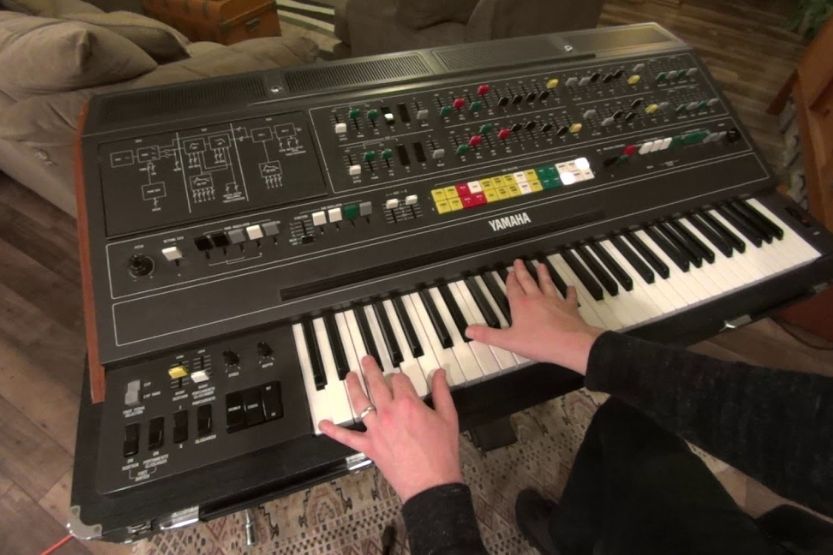
What the Yamaha CS 80 Synthesizer Can Do
The CS-80 was regarded as the first great synthesizer of Japan. For that time, it offered amazing features with its 8 voice polyphony, polyphonic aftertouch, and patch memory storage. There are many things that it can do that were not possible before.
- It can produce great analog strings, drones, pads, and brass with its easily recognizable standard polysynth sound.
- It can produce excellent fat sounds. Examples of these sounds that the CS-80 has created are the sounds you will hear in Vangelis’s “Mutiny on the Bounty,” “Blade Runner,” and “Dune” by Toto.
- It offers natural detuning – it can create string and brass sounds that seem real and authentic.
The CS-80, with its two analog oscillators for each voice, can really produce thick sounds. The sonic potential of the Yamaha CS-80 Synth was made possible through the VCF with its independent high pass and low pass filters, several modulation controls, and the powerful ring modulator.
This synth also offered preset sounds, and 6 user presets that can be selected using the bright buttons right above the keyboard. Its keyboard is also weighted with a full 61 keys. Each key has performance controllers for volume, brightness, pitch, and vibrato.
The pitch bending is also possible because of the long ribbon controller that enables the player to bend the pitch. This controller is also located at the top of the keyboard. However, it has no MIDI control. But a player can MIDI the CS-80 through a complicated retrofit kit available from third-party MIDI kit suppliers.
A Short Background on the Yamaha CS-80 Synthesizer
The tech design of this synth was based on an older synth made by Yamaha, the GX-1. This synth is regarded as the grandfather of analog polysynths. Monophonic synths were the common synthesizers in 1973. But music artists were looking for synths that can do chords. This spurred the tech guys to develop the first synth that could offer polyphonic capabilities.
CS-80 Launch
Yamaha launched the CS-80 in 1976 and promoted it all the way through 1977. The company produced this synth from 1977 to 1982. Ironically, when Yamaha ceased its production of the CS-80, it finally etched its place in the history of pop music.
GX-1 Release
The famous GX-1 was released in 1975. It gave the aura of musical indulgence. Its weight is massive at 387 kilos. This synth consisted of three keyboards, 36 tone generators, and 25 bass pedals. The tone generators have an oscillator and multiple attenuating components mounted on a circuit board.
The GX-1 has all the bells and whistles. That’s why it came with a hefty tag price of $60,000. There’s no doubt that this was the most capable synth at that time. However, its massive weight, its complicated operation, and its costly price tag all contributed to its failure to capture the market’s interest. Yamaha produced only less than 100 units of GX-1.
This was when the CS-80 came into being. It replicated the qualities of the GX-1 but in a more streamlined and affordable way. The Yamaha CS-80 used the tech of GX-1 but with a more portable keyboard.
There were three CS-Series synths that Yamaha produced after the GX-1. Yamaha first released the CS-80 synth. Launched in 1976, it retained many of the tech and features of the GX-1 but with only one keyboard.
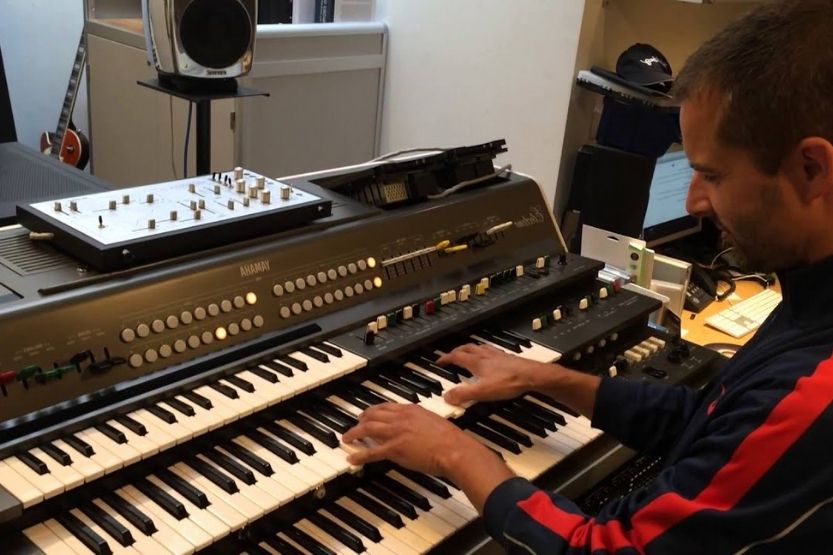
CS-60 Introduction
Then Yamaha introduced the CS-60 in 1977. This was a lighter variant that featured a full keyboard but only one single synth channel. In contrast, the CS-80 has two independent channels. Later on, Yamaha released the CS-50. This is even smaller than the two previous CS’. Its keyboard has 49 keys, with only 4-note polyphony and without a ribbon controller.
Conclusion: Yamaha CS80 Synthesizer
Yamaha Corporation launched the CS80 Yamaha synthesizer in 1976. It is an analog synthesizer that supported true 8-voice polyphony. It has two independent layers for each of the 8 voices. Each voice in this synthesizer has its own set of panel controls. The sound created by the CS80 contributed greatly to the history of modern music that is why it is now considered a legend.
Again, famous artists used this synthesizer, including Toto, Klaus Schulze, Stevie Wonder, Jean-Michel Jarre, Vangelis, Ultravox, and Peter Gabriel. With this, they were able to make hit songs.
Related reading:
Yamaha YM2612 Specs and Review
How Many Keys Does a Piano Have? [Standard, Grand, Baby, Digital]

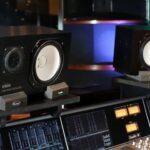
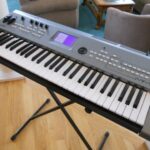

![Yamaha Grand Pianos [Specs and Review] Yamaha Grand Pianos](https://musicalinstrumentpro.com/wp-content/uploads/2021/08/Yamaha-grand-pianos-150x150.jpg)
![Yamaha Hybrid Pianos [Specs and Review] Yamaha Hybrid Pianos](https://musicalinstrumentpro.com/wp-content/uploads/2021/08/Yamaha-Hybrid-Pianos-150x150.jpg)
![Yamaha Upright Pianos [Specs and Review] Yamaha Upright Pianos](https://musicalinstrumentpro.com/wp-content/uploads/2021/08/Yamaha-Upright-Pianos--150x150.jpg)
